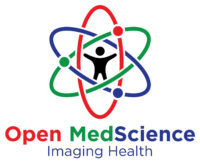Cardiac Perfusion Imaging
Cardiac perfusion imaging is a non-invasive diagnostic technique used to assess blood flow (perfusion) to the heart muscle (myocardium). It plays a critical role in the diagnosis and management of coronary artery disease (CAD), a leading cause of morbidity and mortality worldwide. By identifying areas of reduced blood flow, this imaging modality helps determine the extent and severity of heart disease, guiding treatment decisions such as lifestyle changes, medication, or invasive interventions like angioplasty or bypass surgery.
There are two primary methods of cardiac perfusion imaging: single-photon emission computed tomography (SPECT) and positron emission tomography (PET). Both utilise radioactive tracers that are injected into the patient’s bloodstream. These tracers emit signals detected by specialised cameras, creating images that reflect blood flow to the myocardium. Areas with normal blood flow appear distinct from those with reduced perfusion, which may indicate blockages in the coronary arteries.
In SPECT imaging, commonly used tracers include technetium-99m and thallium-201. The technique is widely available and cost-effective, making it a popular choice in clinical practice. However, SPECT has limitations, including lower spatial resolution compared to PET and susceptibility to attenuation artefacts, which can reduce image clarity.
PET imaging, on the other hand, offers higher sensitivity and resolution. It uses tracers such as rubidium-82 or nitrogen-13 ammonia, providing more precise quantification of myocardial blood flow. Additionally, PET scans typically involve less radiation exposure than SPECT, making them a safer option for certain patient populations. However, PET imaging is less accessible due to higher costs and limited availability of PET scanners and tracers.
Cardiac perfusion imaging is usually performed in two phases: stress and rest. During the stress phase, patients may undergo physical exercise or receive pharmacological agents like adenosine or regadenoson to simulate the effects of exercise. The aim is to evaluate how well the heart responds to increased demand for blood flow. This is followed by the rest phase, during which images are taken under baseline conditions. Comparing the two sets of images helps identify reversible perfusion defects, indicative of ischaemia, versus irreversible defects, which may signify myocardial infarction.
Recent advancements in technology, such as hybrid imaging systems combining SPECT or PET with computed tomography (CT), have further enhanced diagnostic accuracy. These systems allow for simultaneous assessment of coronary anatomy and myocardial perfusion, providing a more comprehensive evaluation of heart health.
In conclusion, cardiac perfusion imaging is an invaluable tool in modern cardiology. It provides critical insights into myocardial blood flow, enabling early detection and effective management of coronary artery disease. As technology continues to evolve, its accuracy and utility are likely to improve, benefiting patients and clinicians alike.
You are here:
home » Cardiac Perfusion Imaging

